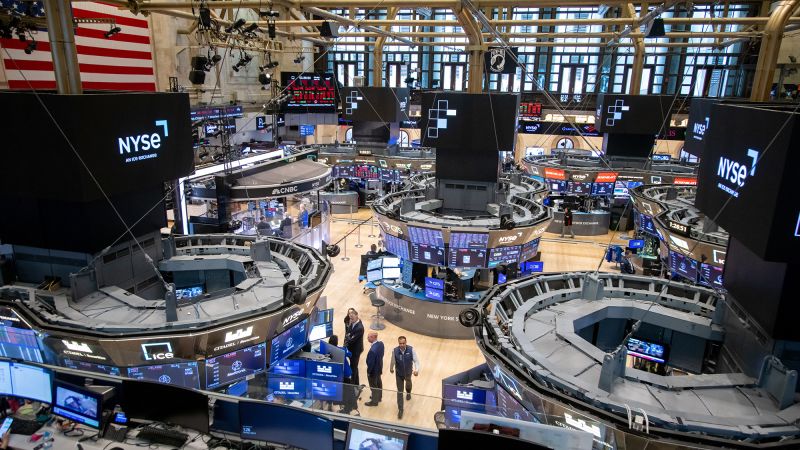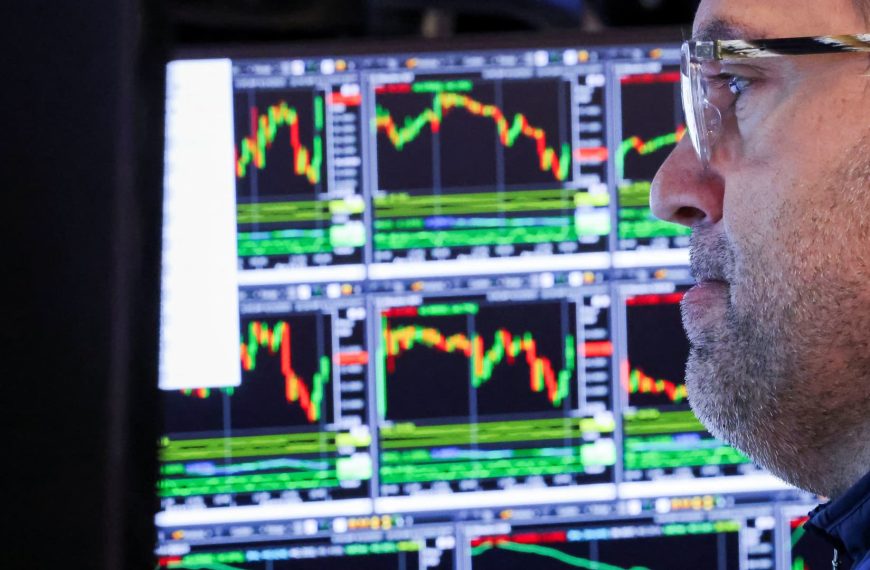The stock market in the United States is experiencing a tumultuous period, poised to record the most challenging first 100 days of any presidential term since Gerald Ford took office in 1974. After a brief surge following Donald Trump’s re-election in November, investor confidence has been rattled by unprecedented uncertainty surrounding trade policies, primarily due to tariffs. This volatility has led to significant losses, with the S&P 500 down over 7.8%, translating to a staggering $3.93 trillion in market value lost since Trump’s inauguration on January 20.
Market Performance Overview
As of Tuesday morning, the Dow Jones Industrial Average showed a slight uptick of 40 points, marking a 0.1% increase. However, the broader S&P 500 index fell by 0.3%, and the tech-heavy Nasdaq Composite dropped by 0.4%. Notably, Jonas Goltermann, a deputy chief markets economist at Capital Economics, expressed concerns about ongoing trade policy uncertainties affecting economic forecasts, suggesting that the road ahead may become increasingly difficult.
- The S&P 500 is on track for the third-worst performance during the first 100 days of any presidential term in U.S. history.
- A 1% rally could prevent the S&P 500 from falling into the fourth-worst category, surpassing George Bush’s first term, where the index dropped 6.9%.
Impact of Tariff Policies on the Market
The stock market has endured a rollercoaster ride this year, largely influenced by Trump’s inconsistent tariff policies. The S&P 500 reached historic heights in February before entering a correction in March, triggered by the announcement of tariff plans. A significant downturn occurred in early April following Trump’s introduction of his "Liberation Day" tariffs, pushing the index close to bear market territory.
- Despite a partial recovery, the S&P 500 remains 2.5% lower than its pre-tariff announcement levels.
- Kelly Bouchillon, a senior partner at Sound View Wealth Advisors, noted the unprecedented negative reception from investors regarding economic policies directly impacting market outcomes.
Sector Performance and Notable Stocks
The famed Magnificent Seven tech stocks, which propelled the market to unprecedented highs in 2024, have faced significant declines this year. For instance:
- Apple (AAPL): down 16%
- Nvidia (NVDA): down 19%
- Tesla (TSLA): down 29%
- Amazon (AMZN): down 14%, with a 1.4% drop on Tuesday.
In contrast, sectors such as tobacco and gold have outperformed. According to CFRA Research, Newmont Corporation (NEM), a leading gold mining company, has surged by 45%, while Phillip Morris (PM) has risen 40%. Palantir (PLTR) has emerged as the top performer within the S&P 500, gaining an impressive 51% this year.
Bond Market Observations
While the stock market has faced turbulence, U.S. Treasuries have also struggled during Trump’s initial days in office. Typically, in times of uncertainty, investors flock to Treasuries for safety. However, recent market behavior has raised questions about their status as a safe haven.
- The 10-year Treasury note yield decreased to 4.22% after peaking in early April, indicating rising investor unease.
Currency Concerns and Global Market Trends
The U.S. dollar has also experienced a significant decline, with the dollar index falling 8.5% this year and hitting a three-year low in mid-April. After Trump’s election, the dollar initially gained strength, but the current downturn has sparked debates about investor confidence in U.S. financial markets.
- The euro, for instance, has appreciated by 9% against the dollar this year.
International Investments and Market Sentiment
Interestingly, international stocks have gained traction as U.S. markets lag behind. According to a recent survey by Bank of America, a record number of global investors plan to reduce their U.S. stock holdings. European markets, particularly Germany’s DAX, are up 12%, while Hong Kong’s Hang Seng has risen 9.7%.
- Investor sentiment is shifting, with many reconsidering their allocations to U.S. assets amid concerns about domestic economic growth.
Volatility and Market Uncertainty
Trump’s trade policies have injected unprecedented volatility into the stock market, as evidenced by the CBOE Volatility Index (VIX), which spiked to levels reminiscent of the early COVID-19 pandemic. Although the VIX has fallen recently, it remains above 20, indicating ongoing market instability.
Gold’s Resurgence
On a brighter note, gold has emerged as a standout asset during Trump’s turbulent first 100 days, soaring approximately 26% this year and briefly surpassing $3,500 per troy ounce. Investors are increasingly viewing gold as a safe haven due to the unpredictable nature of tariffs and trade wars.
In summary, as the market braces for the conclusion of the first 100 days of Trump’s term, volatility and uncertainty remain at the forefront of investor concerns. The evolving landscape will be crucial for shaping future investment strategies and market dynamics.











